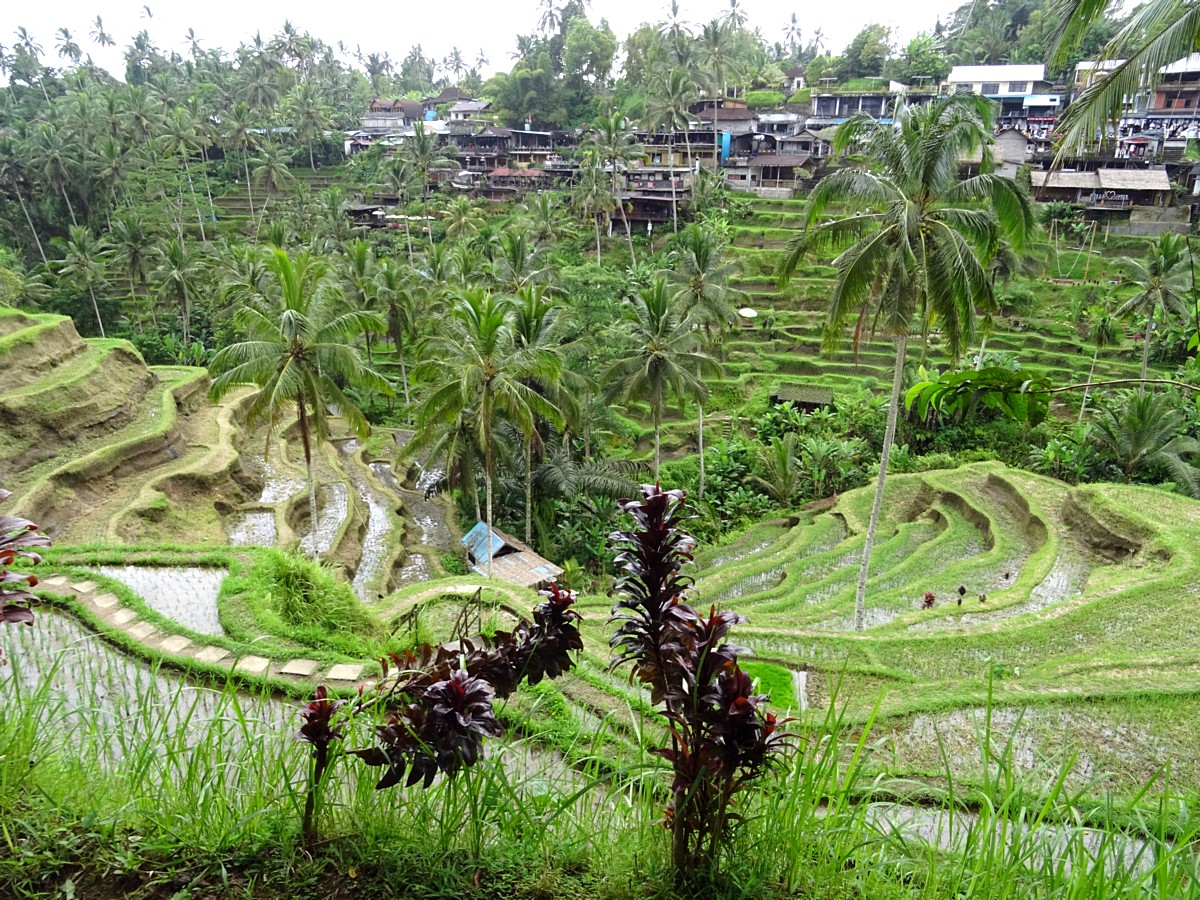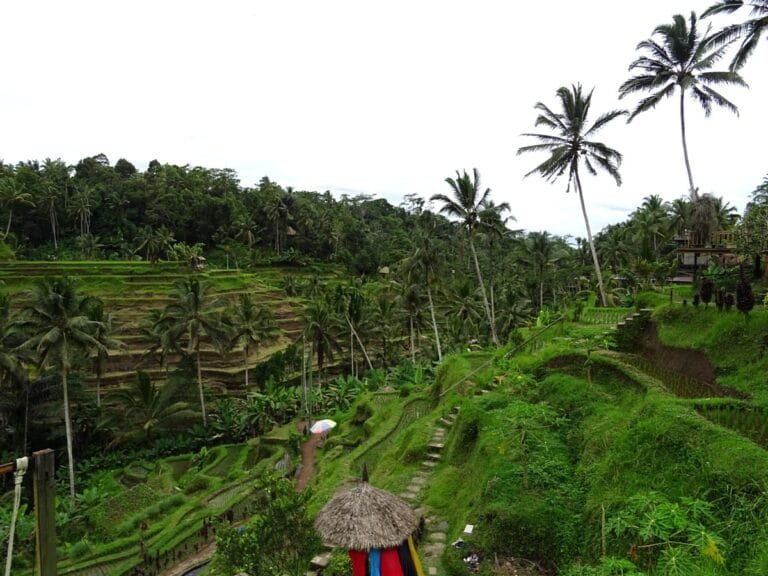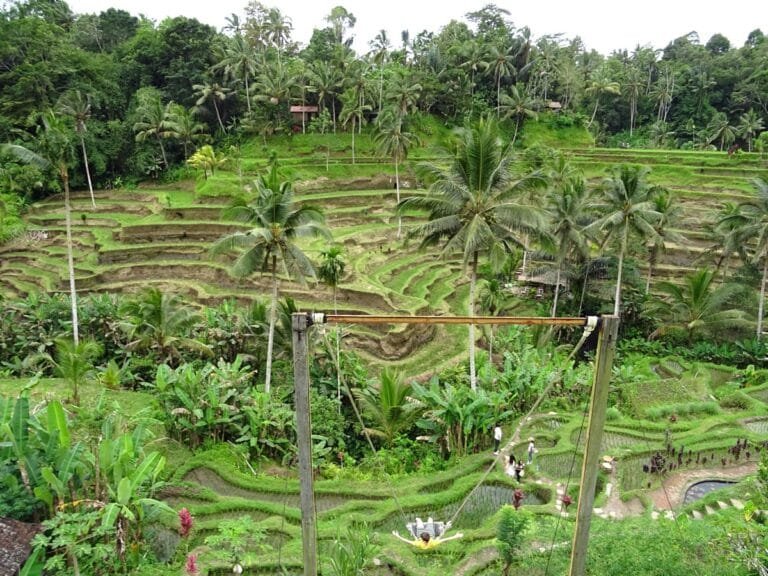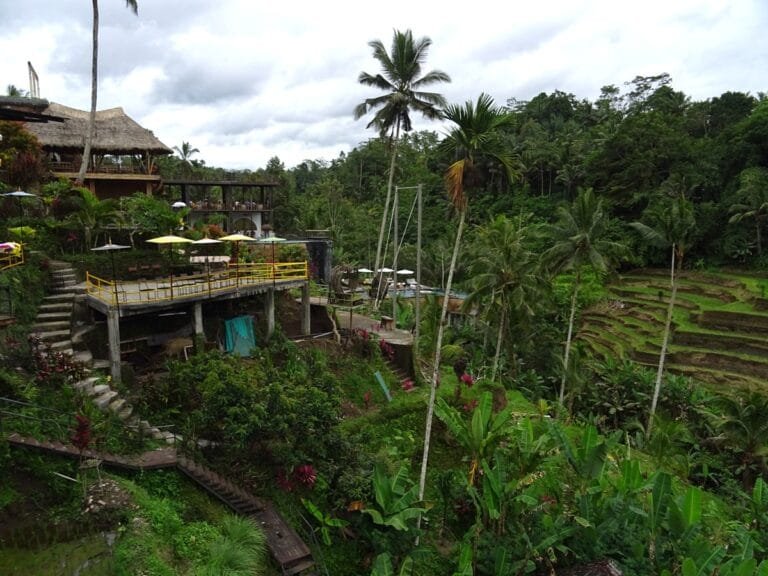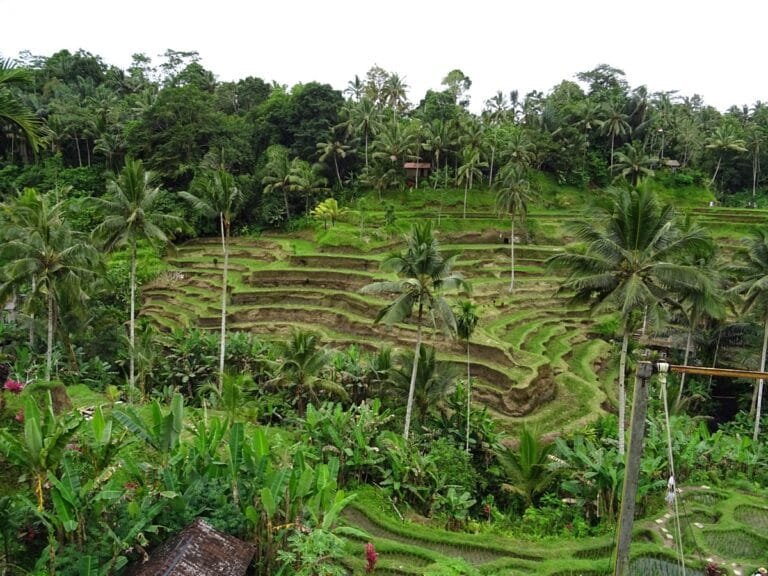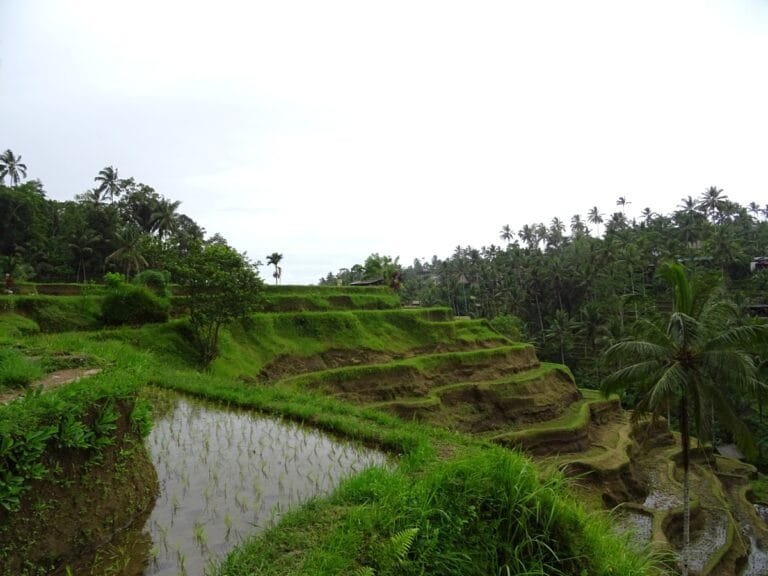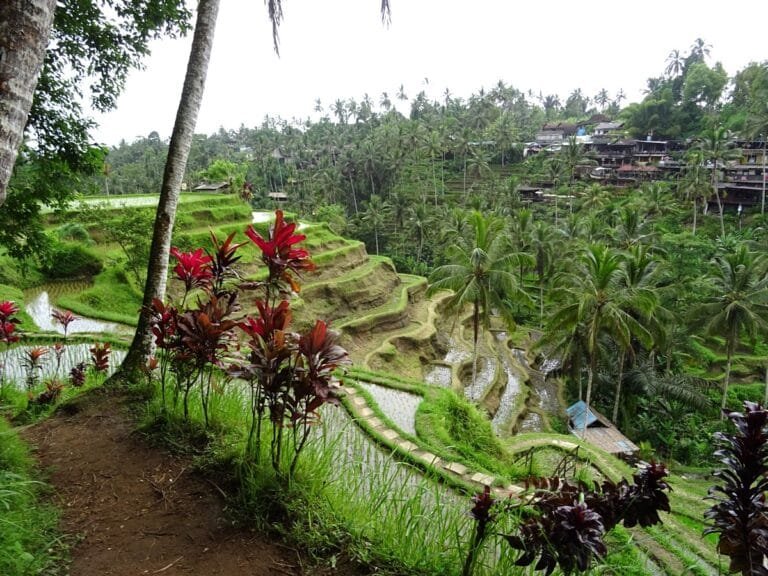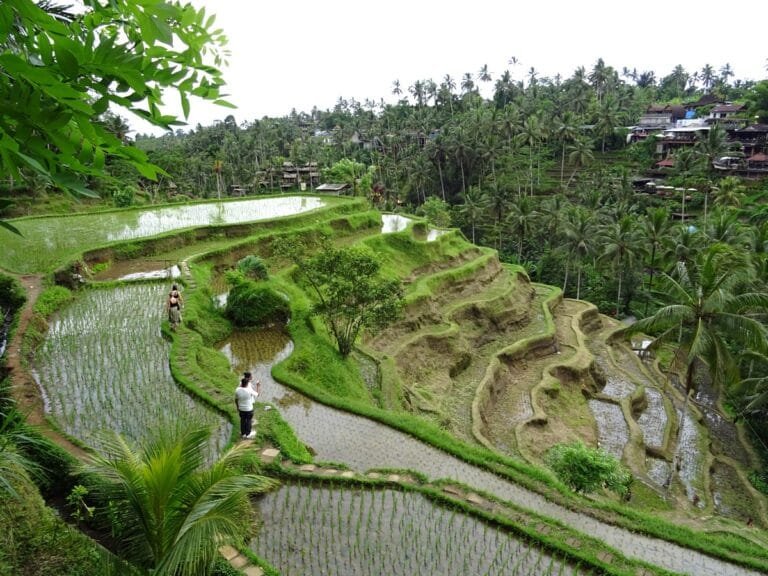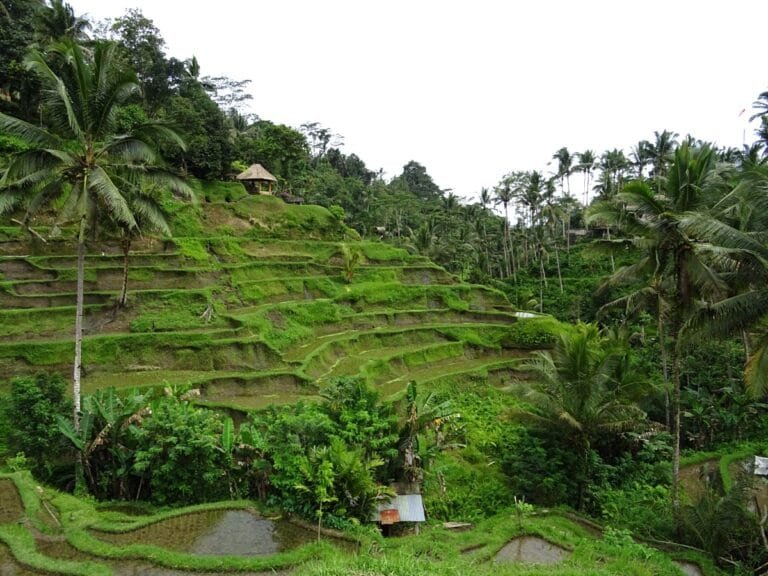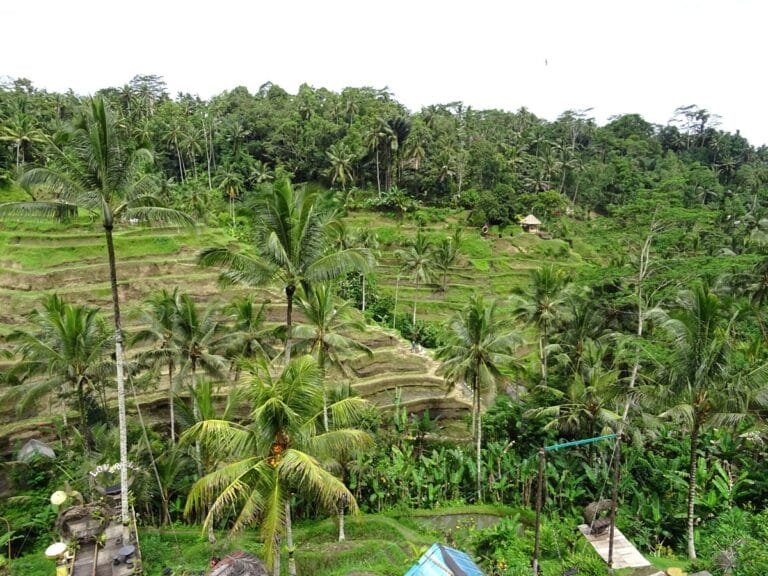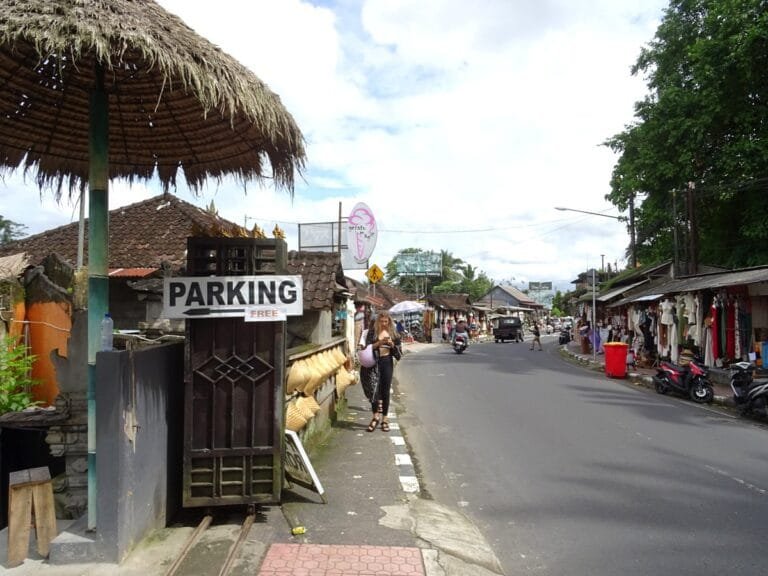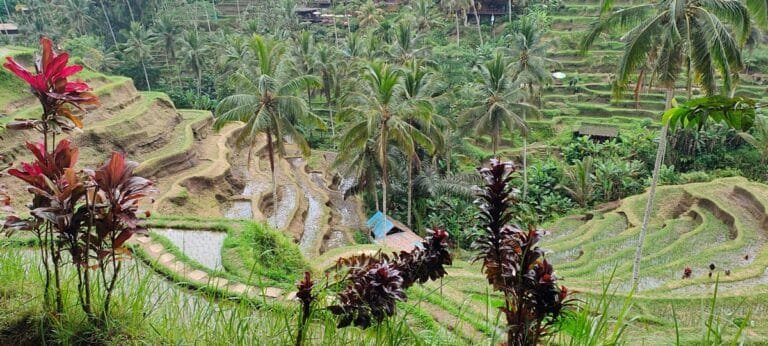Carved into the hills of Ubud, Tegalalang Rice Terrace is a masterpiece of nature and culture.
Tegalalang Rice Terrace: Bali’s Iconic Landscape
The Tegalalang Rice Terrace, located in Ubud, Bali, is one of the island’s most famous and picturesque landscapes. Known for its sweeping, lush green terraces that cascade down the hillsides, Tegalalang is a prime example of Bali’s traditional subak irrigation system, a UNESCO-recognized cultural practice that reflects the harmony between the Balinese people and nature. With its intricate design and deep cultural significance, Tegalalang draws photographers, nature lovers, and curious travelers from around the world.
Only about a 20-minute drive from Ubud’s center, the Tegalalang Rice Terrace is one of the most accessible and stunning rice terraces on the island, offering panoramic views of the terraced fields that seem to stretch endlessly into the horizon. Whether you’re looking to take in the breathtaking scenery, learn about Bali’s ancient agricultural traditions, or enjoy a peaceful walk among the rice paddies, Tegalalang is a must-visit destination.
What to Expect at Tegalalang Rice Terrace
Upon arriving at Tegalalang, visitors are greeted with a sweeping view of the terraces, which appear like giant green steps carved into the landscape. The terraces are irrigated by the traditional subak system, which has been used by Balinese farmers for centuries. This system relies on a complex network of canals and weirs that distribute water evenly across the rice fields, ensuring that the crops remain fertile throughout the year.
As you walk along the narrow paths that wind through the terraces, you’ll have the opportunity to see local farmers tending to their crops, often planting or harvesting rice by hand. The terraces are especially beautiful during the growing season, when the fields are lush and green, but they are equally captivating during the planting and harvesting periods, when the paddies are flooded with water and reflect the sky.
The terraces are dotted with several viewpoints and small cafes where visitors can sit and take in the views while enjoying a drink or a snack. These viewpoints are perfect for photography, offering stunning angles of the terraced landscape. Some of the cafes also provide traditional Balinese meals, allowing you to experience local flavors while surrounded by one of Bali’s most iconic views.
TIP: The best time to visit Tegalalang Rice Terrace is early in the morning or late in the afternoon, when the light is soft, the temperature is cooler, and the crowds are smaller.
Trekking Through the Rice Fields
For those who want to get closer to the action, Tegalalang offers several walking paths that take you down into the terraces. Trekking through the rice fields allows you to experience the tranquility of the area up close, with the sound of water flowing through the irrigation channels and the sight of farmers going about their work.
The walk through the terraces can be steep and narrow in some places, but it is manageable for most visitors. Along the way, you may encounter small huts where local farmers sell coconuts and other refreshments, making it a great way to support the community while enjoying a refreshing drink.
For a more guided experience, some locals offer tours of the rice fields, explaining the subak irrigation system, the rice-growing process, and the spiritual significance of the land to the Balinese people. These tours provide valuable insights into Bali’s agricultural traditions and give you a deeper appreciation of the relationship between the Balinese people and their environment.
TIP: Bring sturdy footwear, as the paths through the terraces can get muddy, especially after rain. A hat and sunscreen are also recommended to protect yourself from the sun.
The Famous Bali Swing and Photo Opportunities
In addition to its natural beauty, Tegalalang Rice Terrace is also known for its Bali Swing, an Instagram-famous activity that allows visitors to swing over the terraces while suspended from tall palm trees. The swing offers a thrilling experience and a unique perspective of the rice fields below, making it a popular attraction for photographers and social media enthusiasts.
There are several swings located around Tegalalang, as well as giant bird nests and other photo-worthy setups that allow visitors to capture the perfect shot against the stunning backdrop of the rice terraces. These photo spots are managed by local businesses, and a small fee is usually required to use them.
For those looking to capture the perfect photo of the terraces themselves, the early morning or late afternoon light is ideal, casting long shadows across the fields and creating a beautiful contrast between the bright green rice plants and the earthy terraces.
Cultural Significance and the Subak System
The beauty of Tegalalang Rice Terrace is not only in its visual appeal but also in its deep cultural significance. The terraces are part of Bali’s ancient subak irrigation system, which is more than just a practical method of farming—it is a reflection of Bali’s unique approach to agriculture, spirituality, and community. The subak system is based on Tri Hita Karana, a Balinese philosophy that emphasizes the balance between humans, nature, and the gods.
Rice is considered a sacred crop in Bali, and the process of cultivating it is deeply intertwined with religious ceremonies and rituals. The subak system, which is managed by local water cooperatives, ensures that the water is distributed fairly and sustainably among all farmers. This system has been recognized by UNESCO as part of Bali’s cultural heritage, and a visit to Tegalalang provides insight into the spiritual and communal importance of rice cultivation on the island.
TIP: If you’re interested in learning more about the subak system and the role of rice in Balinese culture, consider visiting the Subak Museum in Tabanan, where you can see artifacts and displays that explain the history and function of this unique irrigation system.
Practical Information for Visiting Tegalalang Rice Terrace
- Best time to visit: The terraces are most vibrant during the growing season, which typically occurs between March and October. To avoid crowds, visit early in the morning or late in the afternoon. The golden hours around sunrise and sunset provide the best light for photography.
- Opening hours: The terraces are open all day, but the best time to visit is between 6:00 AM and 6:00 PM. There are often fewer people during the early hours, making it a peaceful time to explore.
- Entrance fee: A small entrance fee of around IDR 15,000 – 20,000 (about $1 – $1.50 USD) is required to enter the terrace area. Additional small donations may be requested by farmers along the walking paths.
- Getting there: Tegalalang Rice Terrace is located about a 20-minute drive north of Ubud, making it an easy day trip for visitors staying in Ubud. It’s accessible by car, scooter, or taxi. For a more organized visit, you can also join a guided tour that includes transportation and a local guide.
- Facilities: Several cafes and restaurants offer food and drinks with views of the terraces. Public restrooms are available, but it’s a good idea to bring water and snacks, especially if you plan to walk through the terraces.
A Tranquil Escape into Bali’s Agricultural Heart
Tegalalang Rice Terrace offers a quintessential Balinese experience, where nature, culture, and spirituality come together in one of the island’s most iconic landscapes. Whether you’re interested in photography, trekking, or learning more about Bali’s unique agricultural traditions, Tegalalang provides a peaceful and scenic retreat into the heart of rural Bali.
The combination of ancient rice terraces, local farmers, and the enduring subak system makes Tegalalang more than just a pretty backdrop—it’s a window into the soul of Bali’s deeply spiritual relationship with the land. For travelers seeking to connect with the island’s cultural and natural heritage, a visit to Tegalalang Rice Terrace is a must.




